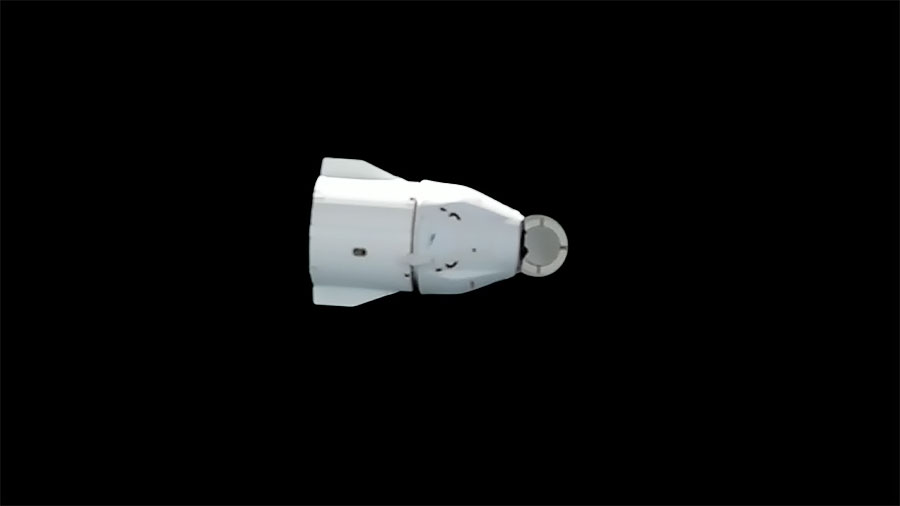
SpaceX’s CRS-26 Cargo Dragon is on its way home from the International Space Station (ISS), following a smooth autonomous undocking from the space-facing (or “zenith”) port of the Harmony node at 5:05 p.m. EDT Monday, 9 January. The cargo ship—launched last 26 November with 7,777 pounds (3,528 kilograms) of pressurized and unpressurized payloads, equipment and supplies for the incumbent Expedition 68 crew—spent more than six weeks docked at the space station, longer than any previous Cargo Dragon, and returns to Earth with approximately 4,400 pounds (2,000 kilograms) of hardware and science results.
Assuming all goes well, the mission will conclude with a parachute-assisted splashdown off the Florida Coast on Wednesday, 11 January, after which its multitude of payloads will be quickly transferred to the Space Station Processing Facility (SSPF) at NASA’s Kennedy Space Center (KSC). That will end CRS-26 after more than 45 days in orbit, nearly a full week longer than the 39 days, 11 hours and three minutes logged by SpaceX’s current Cargo Dragon record-holder, CRS-9, when it returned to Earth in August 2016.
CRS-26 also marks the initial outing of the new C211 Cargo Dragon vehicle, which rose to orbit from KSC’s historic Pad 39A via a brand-new Falcon 9 booster at 2:20 p.m. EST last 26 November. And incidentally, that very booster—tailnumbered B1076—is currently poised on Space Launch Complex (SLC)-40 at Cape Canaveral Space Force Station, Fla., awaiting a scheduled 11:50 p.m. EST Monday liftoff to deliver 40 broadband internet satellites into low-Earth orbit for London, England-headquartered OneWeb.
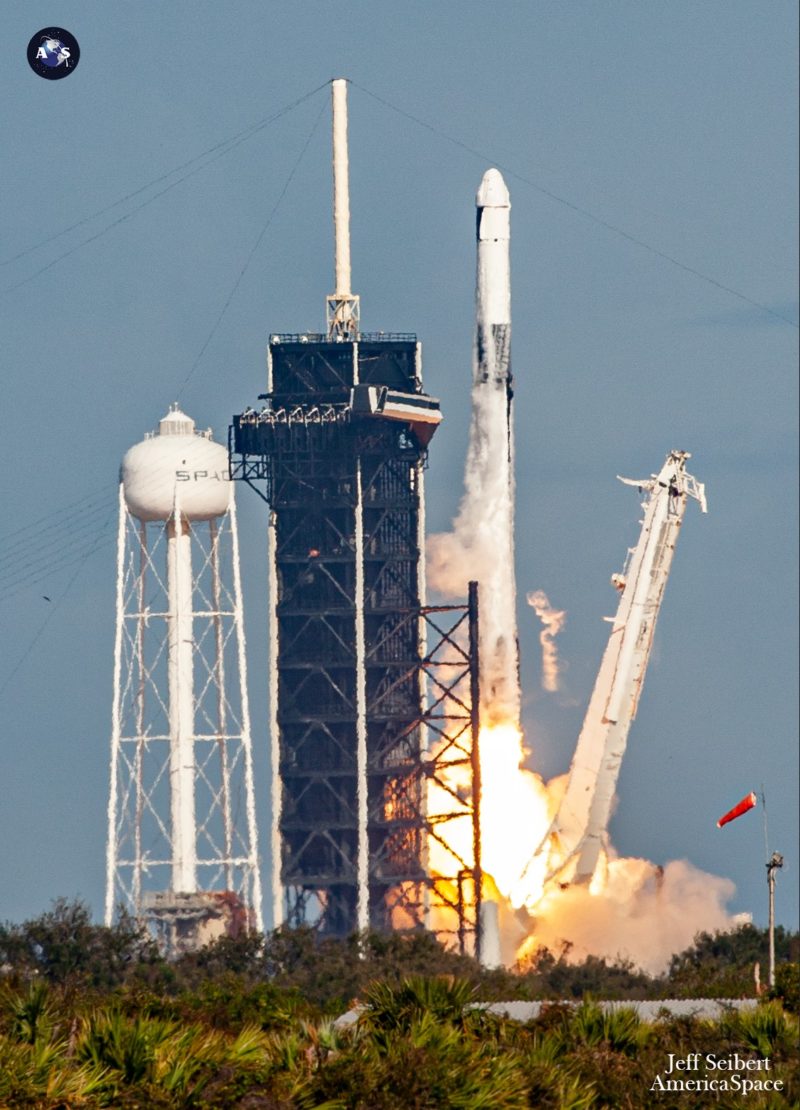
After a smooth ascent on the afternoon of 26 November, the Cargo Dragon separated from the second stage of its Falcon 9 and commenced a 17-hour orbital chase to reach the ISS. Monitored by Expedition 68 astronauts Nicole Mann and Josh Cassada from the station’s multi-windowed cupola, CRS-26 docked perfectly at the Harmony node’s zenith port at 7:39 a.m. EST on the 27th, high above the Pacific Ocean.
Thus began the longest single Cargo Dragon mission ever flown to date to the sprawling orbital complex. This longevity was dictated in part by the needs of its haul of scientific experiments and in part by the nature of one of CRS-26’s principal payloads: the second of three pairs of Boeing-built ISS Roll-Out Solar Arrays (iROSAs), scheduled for installation onto six of the station’s eight legacy Solar Array Wings (SAWs) to “shadow” and augment their power-generating potential.
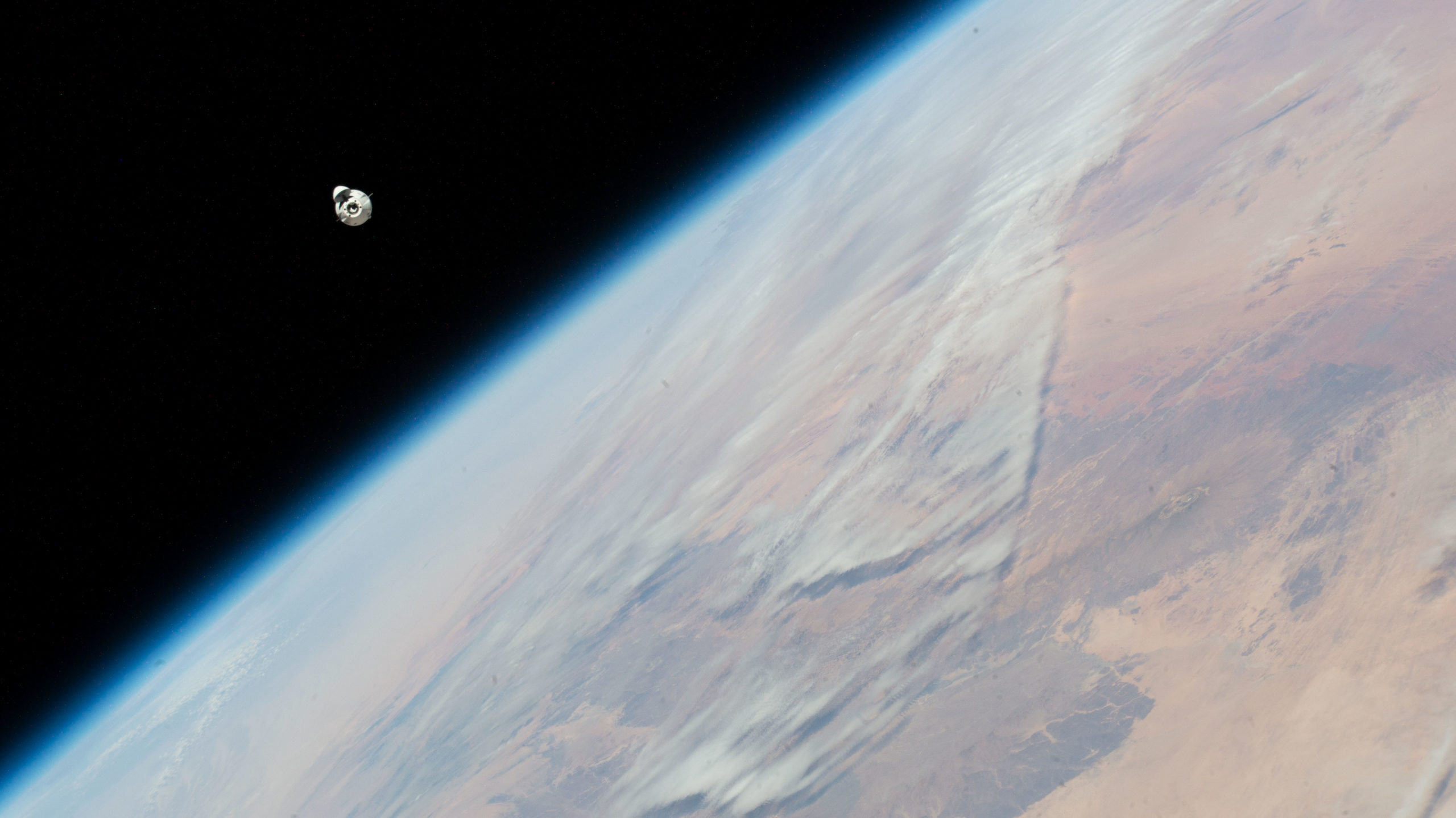
As previously reported by AmericaSpace, iROSAs will support future ISS expansion and customers’ burgeoning payload needs by increasing the overall electrical power output from around 160 kilowatts to as much as 215 kilowatts. The first pair of iROSAs were installed in June 2021 by Expedition 65 spacewalkers Shane Kimbrough and Thomas Pesquet, with CRS-26’s pair of arrays were earmarked to outfit Power Channel 3A on the station’s starboard-side S-4 truss and Power Channel 4A on the port-side P-4 truss during two sessions of Extravehicular Activity (EVA) by Cassada and crewmate Frank Rubio.
Two hours after CRS-26’s docking, Cassada opened Harmony’s zenith hatch and entered the Cargo Dragon, followed in short order by Rubio, Mann and Japan’s Koichi Wakata. Over the next several days, the astronauts worked to transfer critical life science samples over to the U.S. Destiny lab, whilst robotics controllers on the ground used the 57.7-foot-long (17.6-meter) Canadarm2 robotic arm to extract the iROSA pallet from the Cargo Dragon’s unpressurized trunk and install it onto the station’s truss for ease of access by Cassada and Rubio on their spacewalks.
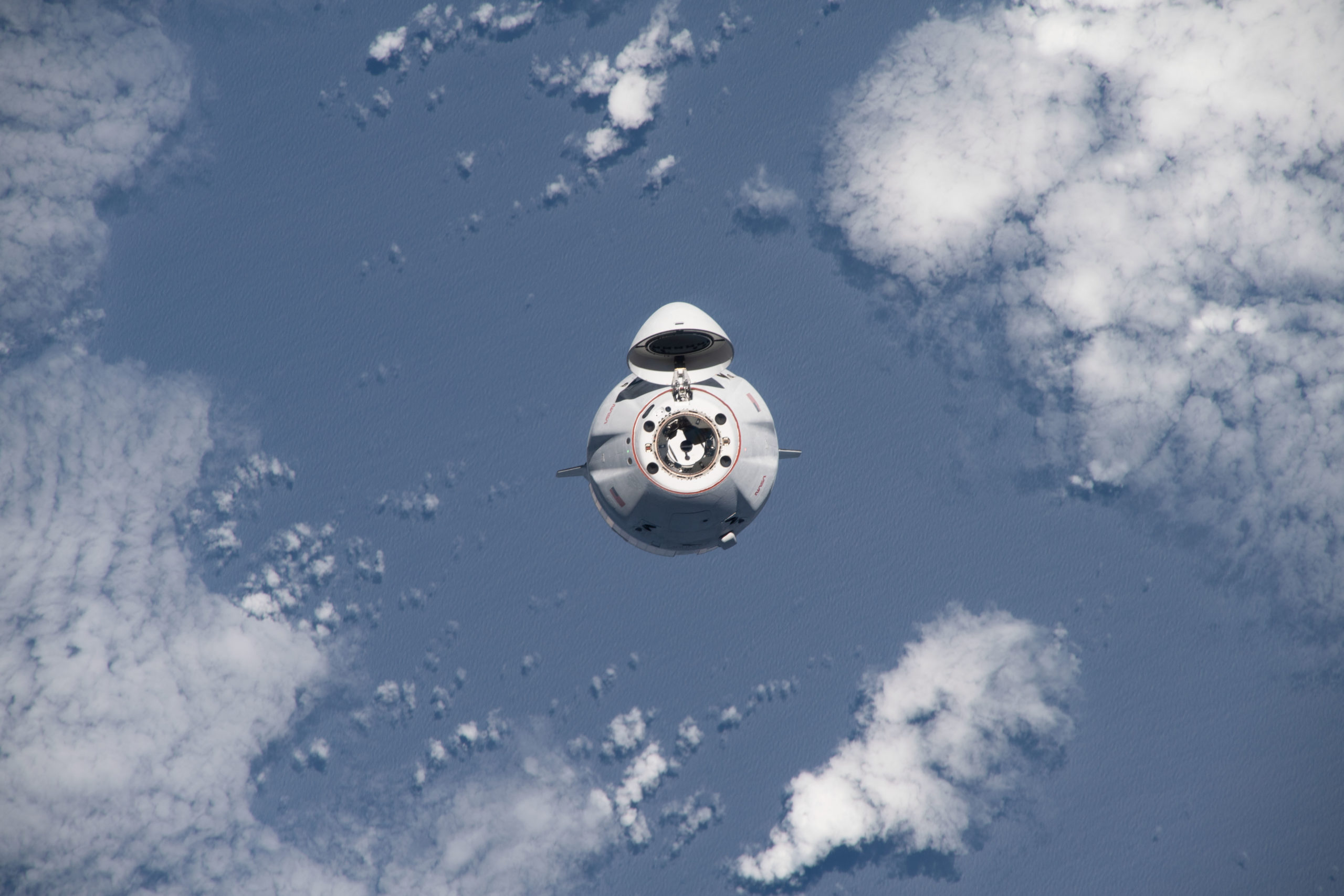
Those spacewalks, executed on 3 and 22 December, totaled 14 hours and 13 minutes, and saw the astronauts successfully install both sets of iROSAs. But the highly visible drama of the iROSA work was also accompanied by a full plate of research aboard CRS-26. Its range of payloads spanned the fields of life sciences to technology and in-space construction to tomato cultivation in support of future long-duration missions into deep space.
Notably, the Veg-05 study expanded the crop variety of the station’s on-board Veggie facility from a previous emphasis upon leafy greens to Red Robin dwarf tomato plants, to be grown over several months, with three “harvests”. This new phase of ongoing Veggie work focuses upon the impact of light quality and fertilizer on production, microbial food safety, nutritional value and taste acceptability.
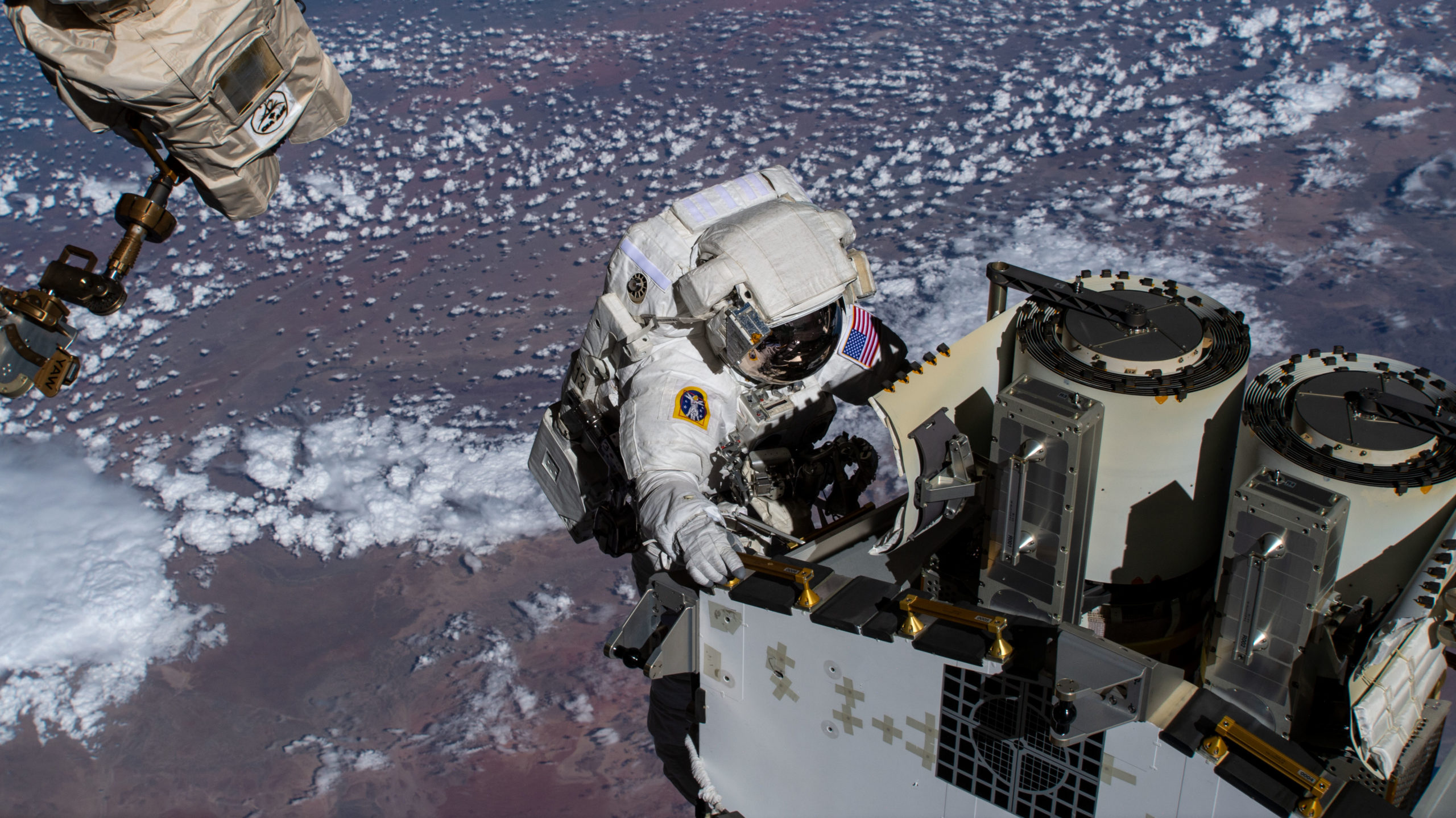
In mid-December, Cassada and Mann began work tending the tomato plants, regularly watering them and photographing their progress. And after Christmas, the crew labored on BioNutrients-2, part of an ongoing series of experiments to understand and provide adequate nutrition to future space explorers, using yogurt, a fermented milk product, known as “kefir”, and a yeast-based beverage.
Earlier this month, Mann nourished and incubated these yeast specimens in the station’s Space Automated Bioproduct Laboratory (SABL).
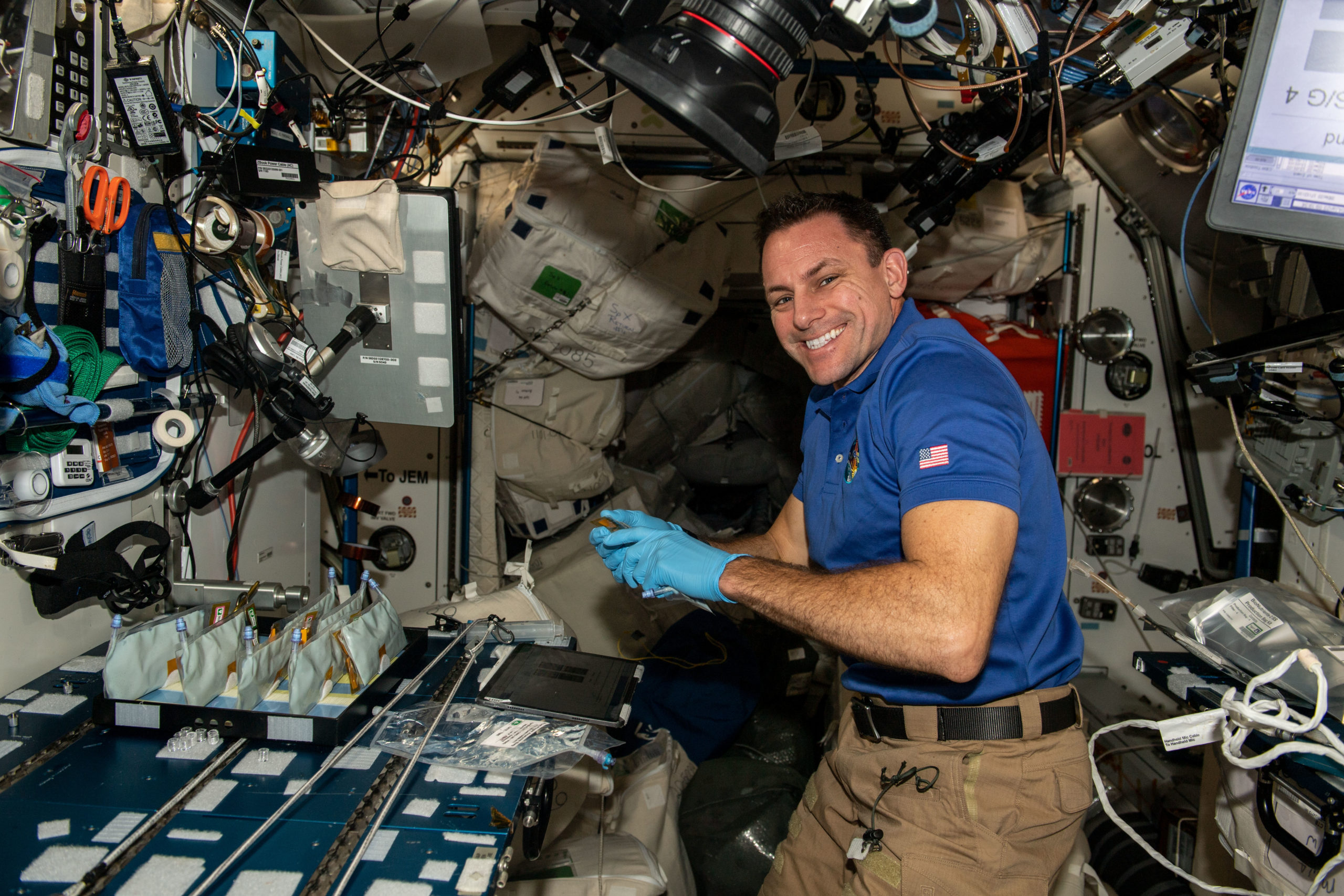
Other CRS-26 payloads included the Moon Microscope to test a kit for in-flight medical diagnoses, using a hand-held 60x-100x miniature digital microscope whose imagery can be transmitted directly to ground specialists. It could provide a diagnostic tool for crew members in space or on the surfaces of the Moon or Mars and may support other tasks, such as testing water, foodstuffs and surfaces for contamination and imaging lunar specimens.
And the Extrusion study seeks to demonstrate the extrusion of photocurable liquid resins into customized forms under microgravity conditions, to create new structural geometries not possible on Earth. It may lay the groundwork for additive manufacturing (or “3D-printing”) of more complicated space structures with specifically tailored properties.
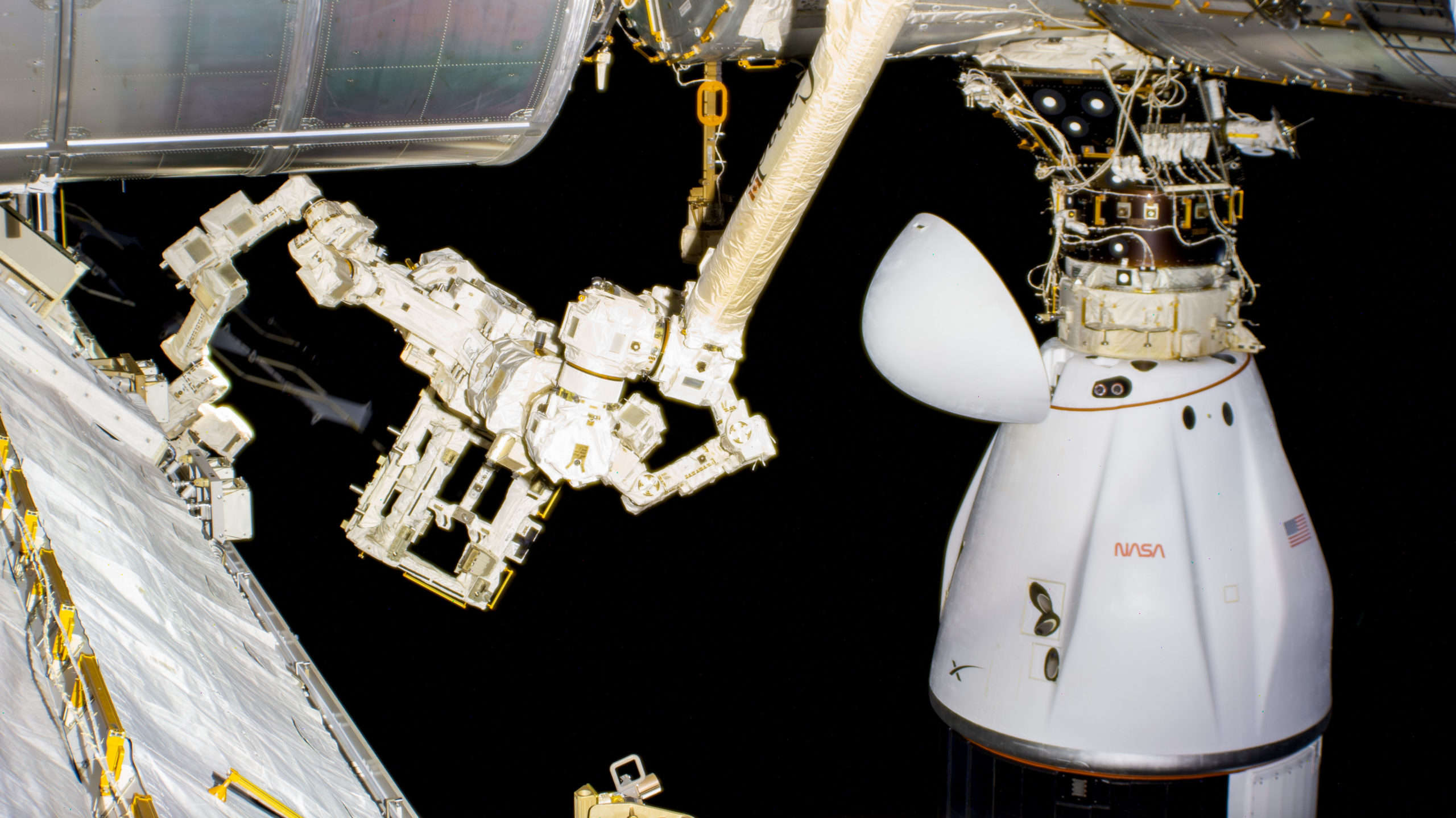
Elsewhere, preparations were underway for CRS-26’s return to Earth. Last week, Rubio analyzed microbial specimens gathered from the ISS atmosphere and surfaces, and subsequently grown in an incubator. These were among the multitude of scientific samples returning to Earth aboard the Cargo Dragon.
Shortly after New Year, Mann and Rubio began loading return hardware aboard the cargo ship, a process which accelerated last weekend to include the efforts of all four U.S. Operational Segment (USOS) crew members. At 5:05 p.m. EST Monday, as the station flew 259 miles (416 kilometers) over the Pacific Ocean, the Cargo Dragon undocked from Harmony’s zenith port to begin its return to Earth, targeting a parachute-assisted splashdown off the Florida Coast on Wednesday.




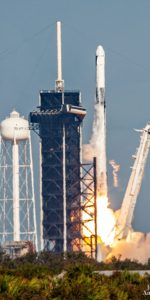
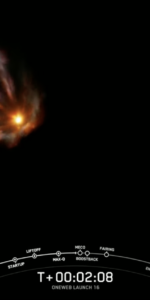
6 Comments
6 Pings & Trackbacks
Pingback:SpaceX Launches 40 OneWebs, Delays Vandenberg Starlink Mission - Space News
Pingback:SpaceX Launches 200th Falcon 9, Continues Vandenberg Cadence - AmericaSpace
Pingback:Launch-Heavy February Dawns With 200th Falcon 9 Mission Success - AmericaSpace
Pingback:Launch-Heavy February Dawns With 200th Falcon 9 Mission Success - Space News
Pingback:Crew-6 Arrives in Florida, Heads for Monday Pre-Dawn Launch to Space Station - AmericaSpace
Pingback:SpaceX Flies Hosted Mission for Intelsat & NASA, Heads for Year’s 25th Mission - AmericaSpace